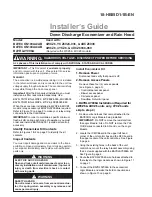
28
29
Angle of view
How much of a scene fits into your
frame is expressed as an angle of
view, which changes according
to focal length. A “standard” lens
is one with an angle of view of
about 7°, which approximates
the scope of human visual
perception. A wide-angle lens is
a lens that has a wider angle of
view, whereas a telephoto lens is a
lens with a narrower angle of view.
Depth of field
Depth of field refers to the area
around your subject that appears
to stay in focus. How “shallow” or
“deep” it is can be independently
affected by various factors such
as aperture, focal length, and
focusing distance. For example,
depth of field gets deeper at
smaller apertures, shorter focal
lengths, or longer focusing
distances. Conversely, it shrinks as
you open the lens, use a longer
lens, or get closer to your subject.
Focal length
A camera lens is constructed
from many lens elements, but
in principle it acts like a single
convex lens. Focal length is the
distance (in millimeters) that light
travels from the center of this
idealized lens to where the image
forms on the focal plane. Subjects
appear larger at longer focal
lengths, and smaller at shorter
focal lengths. At any given focal
length, the overall scope of the
image will vary in relation to the
size of the image sensor.
F-stop
F-numbers (or “stops”) represent
a ratio of the size of the aperture
relative to the focal length of a lens.
Because the aperture regulates
the amount of light passing through
the lens, each successive F-stop
represents a halving or doubling
of the brightness. Because an
F-number is actually a fraction,
smaller F-stops correspond to
larger apertures. Lenses with
smaller F-numbers are considered
“fast” as they gather more light,
permit the use of faster shutter
speeds and provide a brighter
viewfinder image.
Magnification ratio
Magnification compares the
actual size of an object with
how big the object appears
on the image sensor. In macro
photography, 1:1 magnification
means that the object is just
as big in the image as it is in
real life. Lens specifications
usually indicate the maximum
magnification of a lens as either
a rate or ratio.
Perspective
Perspective is the visual effect
of how far apart foregrounds
and backgrounds appear with
respect to each other. It can be
seen clearly in images taken with
a wide-angle lens: foreground
objects are big while background
objects look small, which creates
a sense of distance between
them. This effect diminishes
at longer focal lengths, as the
distance between foreground and
background gets compressed.
Glossary
APS-C size image sensor vs. 35 mm format
At any given focal length, a digital SLR with an APS-C size image
sensor has a slightly smaller angle of view than a 3 mm format
camera, and yields an image that is about two-thirds in size. So
if you are shooting with an APS-C format camera, it is useful to
keep in mind a conversion factor of 1.x. For example, a 0 mm
focal length is equivalent to 7 mm in 3 mm format.
Expand the range of what, how and where you can shoot with
system accessories for your camera. Available accessories
include a variety of high-performance flash units, cables, and
connectors, as well as viewfinder optics, carrying cases, and
other essential items.
Accessories
Principal point
of convex lens
Focal Length
Focal Plane
Focal Point
50mm F2.8
50mm F2.8
Focus
Point
Lens
Lens
Focus
Point
Principal
point
Same
focusing
distance
(50mm)
32˚ angle
of view
47˚ angle
of view
Image area of
35mm format
Image area of DSLR
with APS-C size sensor
Содержание SAL-24105
Страница 1: ...Lenses and Accessories Selection Guide ...
Страница 2: ...Your Journey Has Begun Let Take You Farther ...





































